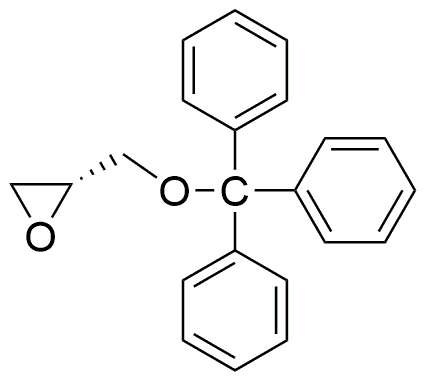(R)-Glycidyl trityl ether is widely utilized in research focused on:
- Polymer Chemistry: It serves as a reactive diluent in the synthesis of epoxy resins, enhancing flexibility and durability in coatings and adhesives.
- Pharmaceutical Applications: This compound is used in drug delivery systems, improving the solubility and bioavailability of active pharmaceutical ingredients.
- Surface Modification: It is applied in modifying surfaces of materials to improve adhesion properties, particularly in the manufacturing of composites and coatings.
- Organic Synthesis: Researchers utilize it as an intermediate in the synthesis of various organic compounds, facilitating the development of new chemical entities.
- Bioconjugation: The compound is valuable in bioconjugation processes, allowing for the attachment of biomolecules to surfaces or other compounds, which is essential in diagnostics and therapeutic applications.
General Information
Properties
Safety and Regulations
Applications
(R)-Glycidyl trityl ether is widely utilized in research focused on:
- Polymer Chemistry: It serves as a reactive diluent in the synthesis of epoxy resins, enhancing flexibility and durability in coatings and adhesives.
- Pharmaceutical Applications: This compound is used in drug delivery systems, improving the solubility and bioavailability of active pharmaceutical ingredients.
- Surface Modification: It is applied in modifying surfaces of materials to improve adhesion properties, particularly in the manufacturing of composites and coatings.
- Organic Synthesis: Researchers utilize it as an intermediate in the synthesis of various organic compounds, facilitating the development of new chemical entities.
- Bioconjugation: The compound is valuable in bioconjugation processes, allowing for the attachment of biomolecules to surfaces or other compounds, which is essential in diagnostics and therapeutic applications.
Documents
Safety Data Sheets (SDS)
The SDS provides comprehensive safety information on handling, storage, and disposal of the product.
Product Specification (PS)
The PS provides a comprehensive breakdown of the product’s properties, including chemical composition, physical state, purity, and storage requirements. It also details acceptable quality ranges and the product's intended applications.
Certificates of Analysis (COA)
Search for Certificates of Analysis (COA) by entering the products Lot Number. Lot and Batch Numbers can be found on a product’s label following the words ‘Lot’ or ‘Batch’.
*Catalog Number
*Lot Number
Certificates Of Origin (COO)
This COO confirms the country where the product was manufactured, and also details the materials and components used in it and whether it is derived from natural, synthetic, or other specific sources. This certificate may be required for customs, trade, and regulatory compliance.
*Catalog Number
*Lot Number
Safety Data Sheets (SDS)
The SDS provides comprehensive safety information on handling, storage, and disposal of the product.
DownloadProduct Specification (PS)
The PS provides a comprehensive breakdown of the product’s properties, including chemical composition, physical state, purity, and storage requirements. It also details acceptable quality ranges and the product's intended applications.
DownloadCertificates of Analysis (COA)
Search for Certificates of Analysis (COA) by entering the products Lot Number. Lot and Batch Numbers can be found on a product’s label following the words ‘Lot’ or ‘Batch’.
*Catalog Number
*Lot Number
Certificates Of Origin (COO)
This COO confirms the country where the product was manufactured, and also details the materials and components used in it and whether it is derived from natural, synthetic, or other specific sources. This certificate may be required for customs, trade, and regulatory compliance.


